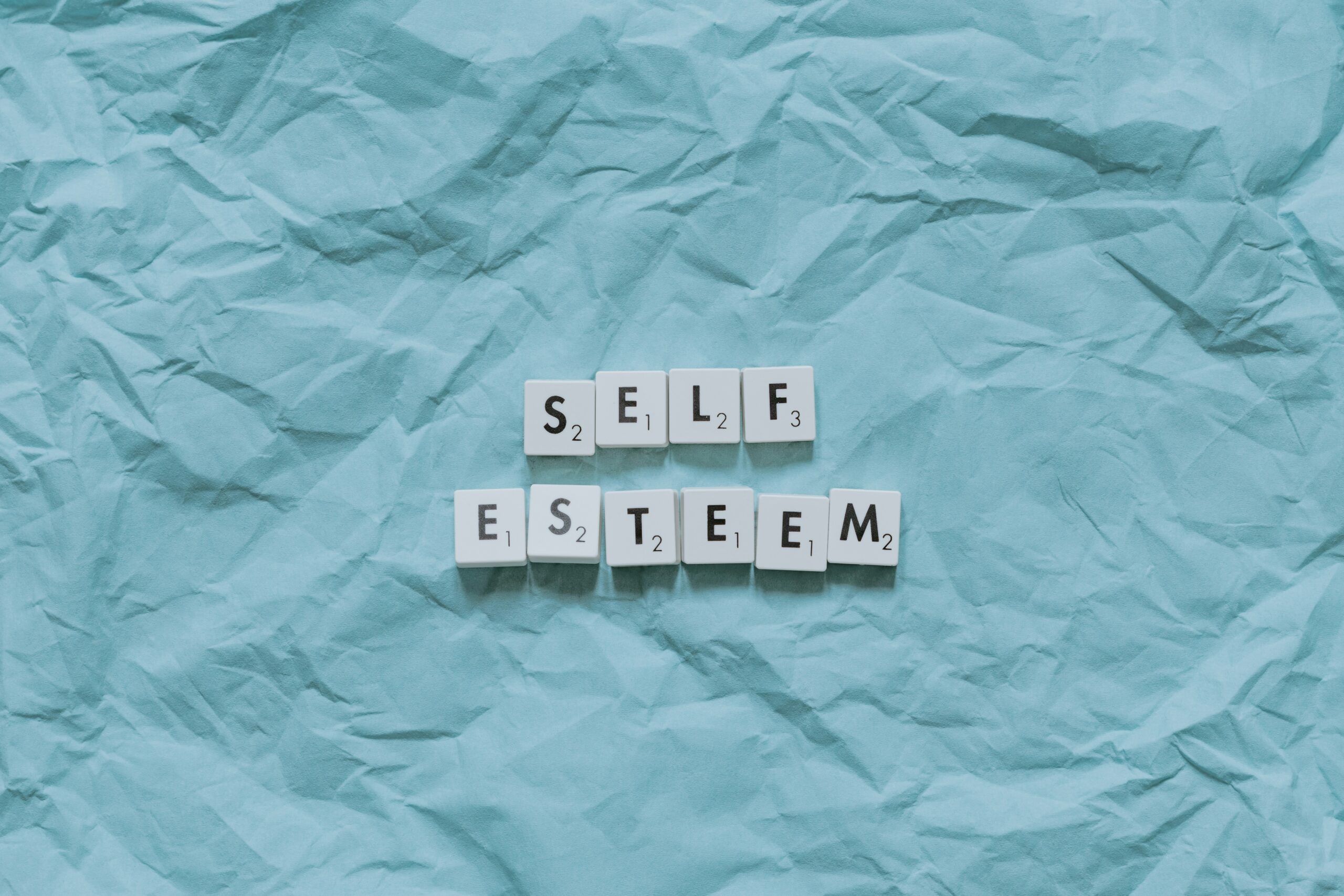The go to blog for ambitious professionals, who want to create sustainable career success despite chronic illness.
The 'Tired but Wired' Blog
Read this post →
When you’re living with a chronic illness, managing your workday often feels like balancing on a tightrope. Every task demands energy, but you’re working with a limited supply and once it’s gone, recovery isn’t as simple as “a good night’s sleep.”
That’s why doing an energy audit is a game-changer.
Just like a financial audit shows where your money is going, an energy audit helps you track where your precious energy is being spent, drained, or (hopefully!) replenished. It’s the first step in working smarter, not harder, while safeguarding your health.
If you’ve ever found yourself saying:
- “Why am I so exhausted after meetings?”
- “I’m busy all day but get nothing meaningful done.”
- “I don’t even know what to change to feel better.”
…then this post is for you.
What is an Energy Audit (And Why You Need One)?
An energy audit is a reflective exercise where you identify which activities in your workday:
- Drain your energy
- Replenish your energy
- Or leave you feeling neutral
It’s not about blaming yourself for being tired. It’s about building awareness, so you can make small, strategic changes that protect your health while staying productive.
Think of it as your personal guide to working smarter, not harder.
Helpful Resource: The ME Associations guide to pacing, explains how managing your energy levels through structured planning can support those with fatigue-related conditions.
How to Start Your Energy Audit in 3 Simple Steps
1. Track Your Workday (With Energy in Mind)
For 3-5 days, keep a simple log of your activities. After each task or meeting, rate your energy level:
- Energised (+)
- Neutral (0)
- Drained (-)
This can be a quick note in your phone or planner. The goal isn’t perfection, it’s awareness.
2. Spot the Patterns
At the end of your tracking period, look for trends:
- Which tasks consistently drain you?
- Are certain times of day worse?
- What activities give you a surprising energy boost?
Even small insights, like noticing that video calls are more draining than emails, can shape smarter work habits.
3. Take One Actionable Step
Choose one energy-draining habit to adjust. For example:
- Swap back-to-back meetings for focus blocks
- Batch admin tasks to avoid constant context switching
- Build in 5-minute rest breaks after draining activities
Small tweaks, done consistently, lead to big results over time.
Want more practical strategies? Download my free guide: 5 Powerful Strategies to Reduce Fatigue at Work to discover how simple changes can protect your energy.
Reclaim Your Energy and Redefine Success
An energy audit isn’t just a task, it’s a mindset shift. It’s the first step toward creating a work-life that honours both your ambition and your well-being.
If this resonates with you, you’ll love The Sunday Power-Up, my weekly newsletter filled with tips for balancing career success with chronic illness. Subscribe here for your weekly energy boost.
Disclaimer:
The content in this blog is based on my personal experience of living with chronic illness and is shared for informational purposes only. It is not intended as a substitute for professional medical advice, diagnosis, or treatment. Always consult with your GP or healthcare professional before making any changes to your lifestyle, work routine, or health management. The tips and strategies shared here can be used alongside medical advice to support your well-being.

Read this post →
When you try to push through illness like it’s just a mindset issue, you’re not being weak, you’re being misinformed. Many professionals fall into this trap, especially if they’re used to being the dependable one, the high performer, or the person who always gets things done. But when you live with a chronic condition, that same “push through” mindset can quietly erode your health, confidence and career sustainability.
In this post, I’ll break down five common mistakes professionals make when trying to push through illness, explain why they backfire, and share smarter, kinder alternatives that protect your energy and help you keep showing up… In ways that actually work.
Why Trying to Push Through Illness Can Backfire
Let’s be real: you didn’t get where you are by taking the easy road. You’ve worked hard. You’ve shown up. You’ve powered through. But when you’re living with a chronic illness, continuing to push through illness using the same tactics might be working against you, not for you.
It’s not about giving up. It’s about getting smarter with the energy you do have. And these five mistakes might be where your energy is quietly leaking.
1. Mistaking Productivity for Value
The mistake: Believing your value is defined by output.
The impact: You override your body’s cues and miss early signs of burnout.
Try this instead: Focus on high-value tasks aligned with your core values and business goals. Learn to delegate, automate or delay anything that isn’t essential.
📝 Start with my free guide, 5 Powerful Strategies to Reduce Fatigue at Work, to implement small changes that protect your energy from day one.
2. Using Rest as a Last Resort
The mistake: Waiting until a crash to rest.
The impact: Your body becomes stuck in a cycle of overexertion and collapse.
Try this instead: Build rest into your daily structure. Short movement breaks, screen-free lunch, or a walk between meetings. Rest doesn’t mean stopping everything. It means pausing with purpose.
💌 Want weekly reminders to make space for this? Subscribe to The Sunday Power-Up, a dose of encouragement and strategy sent every Sunday.
3. Comparing Yourself to “Healthier” Colleagues
The mistake: Holding yourself to standards that don’t consider your lived experience.
The impact: Constant feelings of failure and invisibility.
Try this instead: Acknowledge your capacity today. Use it wisely. Success isn’t about keeping up, it’s about showing up with what you’ve got and doing so sustainably.
📚 Check out this insightful Psychology Today article on redefining success through purpose rather than productivity.
4. Ignoring Cognitive Symptoms Like Brain Fog
The mistake: Seeing brain fog as laziness or poor focus.
The impact: Mistakes multiply. Frustration grows. Self-trust erodes.
Try this instead: Adapt your systems. Use visual checklists, voice-to-text tools, or batch low-energy tasks. Plan your most demanding tasks during your energy peaks, not when you’re drained.
5. Thinking It’s Either Health or Career, Not Both
The mistake: Believing that adapting means settling.
The impact: You continue to sacrifice your body for goals that now feel harder to reach.
Try this instead: Redefine what ambition looks like with chronic illness. It might not be linear. It might be slower. But it can still be rich, purposeful, and deeply fulfilling.
Ready to Let Go of the “Push Through” Mentality?
Pushing through illness isn’t noble. It’s exhausting. And it’s not your only option. You deserve strategies that work with you, not against you.
With a few key mindset shifts and some small structural changes, your ambition and your health can finally get on the same team.
👉 Grab your free guide: 5 Powerful Strategies to Reduce Fatigue at Work, it’s packed with practical tools you can implement straight away.
👉 Join The Sunday Power-Up newsletter for weekly support, strategy and solidarity in your inbox.
Additional Resources
For UK-based professionals seeking support, the Access to Work scheme offers grants to help pay for practical support if you have a disability or health condition. This can include specialist equipment, support workers, or help with travel costs, enabling you to stay in work while managing your health.
Disclaimer:
The content in this blog is based on my personal experience of living with chronic illness and is shared for informational purposes only. It is not intended as a substitute for professional medical advice, diagnosis, or treatment. Always consult with your GP or healthcare professional before making any changes to your lifestyle, work routine, or health management. The tips and strategies shared here can be used alongside medical advice to support your well-being.

Read this post →
If you’ve ever finished the workday feeling like you gave everything and still didn’t do “enough,” you’re not alone. For professionals living with chronic illness, protecting your energy is often the missing piece… Not just in avoiding burnout, but in rebuilding the confidence that can feel chipped away by fatigue, fog and physical limits.
Confidence isn’t just about performance. It’s about how you feel in your body, how you trust your decisions, and how you experience success on your own terms.
Let’s explore how protecting your energy can be the foundation for reclaiming your self-worth and professional confidence.
1. Depleted Energy Undermines Confidence (Even If You’re Still Performing)
When you’re constantly pushing through symptoms to meet deadlines, your body and brain receive one consistent message: I’m not enough unless I do more. Over time, this creates a dangerous loop where:
- You ignore signals from your body
- You feel disconnected from your strengths
- Your self-esteem starts to erode, even when you’re achieving on paper
This doesn’t mean you’re not capable. It means you’re spending energy in ways that don’t support your long-term success. Confidence needs space to grow, and exhaustion leaves no room for that.
According to Mind UK, poor energy management and burnout are directly linked to reduced confidence and workplace disengagement, particularly for those living with long-term health conditions. (source)
2. Small Shifts in Protecting Your Energy Build Long-Term Confidence
Rebuilding confidence starts with one essential mindset shift:
Rest is not the opposite of productivity. It’s the foundation of it.
Here are three small daily shifts that can protect your energy and rebuild belief in your ability to succeed:
- Start the day with a low-effort win Something as simple as 5 minutes of stretching or a short walk to the kettle before emails can help signal, I take care of myself first.
- Use the ‘half-task’ rule If your energy is unpredictable, break tasks into halves. Completing half is still a win, and you can build from there. This creates consistency, which builds confidence.
- Create a ‘rest-rich’ workspace Schedule active rest (like nostril breathing or looking out the window) every 90 minutes. It doesn’t need to be big, it needs to be intentional.
💡 Want more ideas? Download my free PDF: 5 Powerful Strategies to Reduce Fatigue at Work and start protecting your energy with simple, impactful steps.
3. Energy Management is a Form of Self-Respect
Many professionals tie their confidence to output. But real, lasting confidence grows when your actions align with your values.
By managing your energy with intention, you’re saying:
“My well-being matters. I can succeed without sacrificing myself in the process.”
This shift changes how you interact with your work, your team, and even how you talk to yourself. It brings clarity around your capacity and helps you advocate for what you need, skills that are essential to confidently returning to or thriving in the workplace.
4. Confidence Grows in the Recovery, Not Just the Hustle
We often associate confidence with pushing through challenges. And yes, resilience matters. But for professionals managing chronic illness, the most powerful kind of confidence comes from knowing:
I can pause and still be worthy.
That means tracking your energy, recognising your limits, and celebrating what you do manage, even if it looks different to others.
Each small win in energy management, saying no to an extra meeting, building in a break, choosing lunch over inbox-zero, is a vote for your long-term self-worth.
And the more those wins stack up, the stronger your belief becomes.
Ready to Rebuild from a Place of Strength?
Before you take on more, take a moment to protect what matters most: your energy, your boundaries, and your self-respect. Confidence doesn’t require you to push harder. It requires you to work smarter, with intention, values and health at the centre.
If you’re looking for personalised support to create a sustainable work-life balance that honours your health and your ambition, explore my 1:1 coaching services.
✨ Together, we’ll focus on what matters most to you, so you can redefine success on your own terms.
Before You Go… Want Weekly Energy Tips in Your Inbox?
Sign up to The Sunday Power-Up, my free weekly email filled with mindset tips, small wins, and energy-saving strategies for working professionals managing chronic illness or burnout.
📬 Join The Sunday Power-Up here
Disclaimer:
The content in this blog is based on my personal experience of living with chronic illness and is shared for informational purposes only. It is not intended as a substitute for professional medical advice, diagnosis, or treatment. Always consult with your GP or healthcare professional before making any changes to your lifestyle, work routine, or health management. The tips and strategies shared here can be used alongside medical advice to support your well-being.

Read this post →
You’re getting eight hours of sleep (on a good night), cutting back on caffeine, maybe even squeezing in a lunchtime walk… so why are you still completely wiped by mid-afternoon? The truth is, chronic tiredness at work often isn’t about how much we’re doing, but how we’re doing it. Energy leaks at work, those small, hidden actions and habits that go unnoticed, are often the biggest drain on your stamina. And for professionals managing chronic illness or fatigue, those leaks can add up fast.
Let’s take a closer look at where your energy might be slipping away, and how to stop the drain before it turns into burnout.
1. Constant Context Switching: The Overlooked Energy Leaks at Work
The drain: Jumping between emails, meetings, Slack messages and tasks might feel productive, but it comes at a huge cost to your energy. Each switch forces your brain to reset, which is especially exhausting when you’re managing cognitive or physical fatigue.
Try this instead:
Batch similar tasks together. Start your day with 30 minutes just for emails, then block time for one priority task. Use tools like Notion or a basic timer app to maintain focus. Protect your mental transitions like you would a physical break.
2. Overcommitting (Even in Small Ways)
The drain: Taking on extra tasks or squeezing in “just one more thing” chips away at your energy budget. It’s tempting to say yes to everything when you feel like you need to ‘keep up’, especially in workplaces that reward constant output over conscious contribution.
Try this instead:
Pause before committing. Ask yourself: Is this worth the energy? Is it aligned with my values or priorities? One powerful phrase to buy yourself time: “Let me check and get back to you.” It creates space between impulse and decision.
3. Emotionally Masking How You Really Feel
The drain: Pretending to be okay when you’re not, smiling through pain, hiding symptoms, downplaying fatigue is a massive energy leak at work. It’s a silent effort that chips away at your reserves without you even realising it.
Try this instead:
Start small: acknowledge your truth to yourself. Then consider sharing selectively with a trusted colleague or manager. You don’t owe anyone a full explanation, but softening the mask can ease emotional tension and open the door to support.
Need help expressing your needs at work?
👉 Download: 5 Powerful Strategies to Reduce Fatigue at Work
4. Working Through Breaks or Skipping Them Entirely
The drain: Skipping meals, powering through meetings, and ignoring your body’s signals might seem efficient, but it quickly backfires. Your body isn’t designed to run on empty, especially when you’re managing chronic symptoms.
Try this instead:
Set non-negotiable break times. Step away for just five minutes, stretch, breathe deeply, and hydrate. Even a small reset can bring surprising clarity and comfort.
For a simple technique to help you calm your nervous system, try this NHS guide to breathing exercises for stress.
5. Letting Your Inner Critic Run Wild
The drain: That internal voice saying you’re not doing enough? It’s draining you. Constant self-monitoring, guilt, and comparison, especially when you’re working with reduced capacity, turns mental strain into physical exhaustion.
Try this instead:
Practise compassionate self-talk. When the critic shows up, counter it with truth: “I’m still contributing. I deserve rest. My energy is valuable.” Over time, this internal shift builds resilience and self-worth.
Want more reminders like this?
👉 Join The Sunday Power-Up Newsletter for weekly practical tips and uplifting encouragement to manage your energy and mindset.
Final Thoughts: Healing Starts with Awareness
If this list made you nod along or feel a little seen, take it as a sign, your fatigue is valid. And it’s not all in your head.
Energy leaks at work don’t always show up on your to-do list, but they have real consequences. The good news? You can take small, meaningful steps today to plug those leaks and work in a way that protects your health and supports your success.
Disclaimer:
The content in this blog is based on my personal experience of living with chronic illness and is shared for informational purposes only. It is not intended as a substitute for professional medical advice, diagnosis, or treatment. Always consult with your GP or healthcare professional before making any changes to your lifestyle, work routine, or health management. The tips and strategies shared here can be used alongside medical advice to support your well-being.

Read this post →
…(and Vice Versa)
Let’s be honest, if you’ve spent years tying your self-worth to productivity, the idea of slowing down can feel terrifying. Many of us have internalised the belief that success only comes from sacrifice. But when you’re living with chronic illness, burnout, or ongoing fatigue, that belief doesn’t just hold you back, it can derail your entire life. What if I told you that prioritising your health isn’t a detour, it’s the path forward?
In this post, I’ll share how rethinking your work-life dynamic can bring not only better health, but renewed energy, clearer purpose, and even greater career satisfaction.
1. Your Body Isn’t a Barrier to Success, It’s the Guide
For a long time, I saw my body as something to push through. I ignored warning signs, drank the coffee, took the meetings, met the deadlines, even when I could barely get out of bed.
Sound familiar?
Eventually, I realised my symptoms weren’t an inconvenience, they were information. Learning to listen to my body became the most powerful career tool I never knew I needed.
✅ Reframe: Your body isn’t working against you, it’s trying to work with you. Honour its signals and use them to reshape your day in a way that sustains both your energy and your ambitions.
2. Redefine What Productivity Looks Like
The traditional 9–5 model doesn’t work for everyone and that’s okay. Working professionals managing chronic illness often need flexibility over structure, focus blocks over constant availability, and deep work over busywork.
Instead of measuring your worth in hours worked, try asking:
- Did I work on what matters most today?
- Did I make space to rest and refuel?
- Did I make decisions that align with my values?
This shift isn’t laziness, it’s sustainability.
If you’re looking for practical energy-saving strategies you can use right now, download my free guide:
👉 5 Powerful Strategies to Reduce Fatigue at Work
3. Prioritising Your Health Leads to Sustainable Success
Let’s flip the narrative: what if prioritising your health is actually the smartest career move you can make?
When your body is supported, your mind is clearer. When you build your day around your energy, not a rigid schedule, you get more done with less strain. Over time, that leads to better results and better health.
Whether you’re managing CFS/ME, ADHD, chronic pain, or burnout, this mindset shift can change everything.
And if you’re ready to explore how your work and health can support each other long-term, my coaching services are designed to guide you through it. Together, we’ll work out what energises you, what drains you, and how to build a work-life rhythm that actually works for you, not against you.
4. Let Go of the Guilt and Reclaim Your Power
Many of us feel guilty for needing rest or asking for adjustments at work. But here’s the truth:
🧠 Guilt is a sign that your values and your reality are clashing.
If you value integrity, impact, or excellence, you might be pushing through fatigue to try and honour those values. But the cost is too high.
Instead, let’s redefine what success looks like on your terms. Because the most powerful work comes from those who protect their energy and lead with intention, not from those who burn out trying to meet everyone else’s expectations.
If you’re navigating mental load, anxiety, or burnout, resources like NHS Every Mind Matters offer guidance on how to recognise the signs and support your well-being alongside work.
5. Healing and Ambition Can Coexist
This is the heart of it all: You don’t have to choose between getting better and getting ahead.
When you prioritise your health, you actually create the conditions for long-term success, clearer thinking, more consistent performance, and a life outside of work that fuels you.
It’s not about doing less. It’s about doing what matters most.
Ready to Put This Into Action?
If you’re nodding along but wondering how to start making changes without dropping all the balls you’re juggling, I’ve got you.
Start with my free resource,
👉 5 Powerful Strategies to Reduce Fatigue at Work
It’s packed with quick wins you can try today.
And if you want guidance tailored to your situation, my coaching services are built to help you reconnect with what matters, find balance, and build a sustainable approach to your career that respects your energy and health.
You can also get weekly tips, honest insights, and energy-boosting strategies in your inbox every Sunday. Sign up for The Sunday Power-Up newsletter here.
Final Thoughts
Prioritising your health isn’t selfish. It’s not a luxury or a backup plan. It’s the foundation.
You can be ambitious and still honour your limits.
You can build a fulfilling career without burning out.
And you can redefine success in a way that feels good in your body and your soul.
You don’t have to do it alone and you don’t have to do it all at once.
Let’s take the first step together.
Disclaimer:
The content in this blog is based on my personal experience of living with chronic illness and is shared for informational purposes only. It is not intended as a substitute for professional medical advice, diagnosis, or treatment. Always consult with your GP or healthcare professional before making any changes to your lifestyle, work routine, or health management. The tips and strategies shared here can be used alongside medical advice to support your well-being.

Read this post →
Why Redefining Your Work Goals Might Be the Missing Piece in Your Recovery
When you’re living with a chronic illness, it can feel like your body and your career are constantly at odds. You want to succeed, you still have ambition, creativity, and drive, but the way you’ve been taught to work? It’s draining the very energy you need to heal.
I’ve been there. Crawling to the laptop in the mornings, working from bed, pushing through symptoms because I thought that’s what success demanded of me. I wore my productivity like a badge of honour. But the truth? My body was trying to protect me. I just wasn’t listening.
If you’re stuck in that cycle, working harder to feel enough but getting sicker in the process, this post is for you.
Let’s talk about how creating a healthier career might be the most important health decision you ever make.
Why Your Job Could Be Slowing Down Your Recovery
Healing takes more than supplements and symptom trackers. It requires energy… Emotional, mental and physical. And many of us are spending that energy on work environments, habits or expectations that are completely out of sync with what our bodies need.
Here’s how that shows up:
- You recover over the weekend, only to crash by Wednesday.
- You feel like you’re always “behind,” no matter how much you do.
- You say yes to work tasks that leave you exhausted, even though they’re not urgent or important.
- You’re constantly “on”, even outside of working hours.
This isn’t laziness. It’s survival.
And according to Mind UK, long-term stress caused by work demands can have a serious impact on both mental and physical health, particularly for those already managing chronic conditions.
But it doesn’t have to stay this way.
3 Signs You Need to Build a Healthier Career
1. You define success by your output, not your impact
If your self-worth is measured in how many hours you work or how much you produce, you’re likely pushing past your energy limits on a daily basis. Healing becomes secondary to proving your value.
2. You’re afraid to slow down, because you equate rest with falling behind
Let’s get one thing straight: Rest is not the opposite of ambition. It’s the fuel for it. Traditional work culture glorifies burnout and over-delivery. But when you rest strategically, your output becomes more sustainable and effective.
3. You haven’t adjusted your goals to reflect your current capacity
If you’re still trying to meet the same goals you set before your diagnosis, no wonder it feels like an uphill battle. A healthier career means aligning your ambitions with your reality, not with unrealistic expectations.
A Healthier Career Starts With These 3 Mindset Shifts
Want to learn practical ways to reduce fatigue at work? Download my free guide: 5 Powerful Strategies to Reduce Fatigue at Work
1. Your career should support your healing, not compete with it
You can still be successful. You can still have goals. But your health is the foundation, not an afterthought. Start asking: “What does sustainable success look like for me?”
2. Doing less doesn’t mean achieving less
You don’t need to earn rest. You need to design your work so that rest is embedded in it. When you reduce cognitive overload and stop switching between tasks, you get more done with less stress.
3. Aligning your work with your values helps you heal
When your work reflects who you are, you experience less internal conflict and that means less emotional fatigue. Feeling connected to your purpose creates energy. It gives meaning to your day, even if your capacity is limited.
Small Adjustments, Big Results
Making your career work for you doesn’t mean a full-blown career change (unless that’s what you want). Sometimes, it’s as simple as:
- Reducing context switching during the day
- Asking for flexibility in your hours
- Saying no to the extras that drain your energy
- Creating a ‘crash plan’ for flare-ups
- Building a routine around your natural energy peaks
It’s about working smart, not harder.
Ready to Shift Gears?
If this is resonating, you’re not alone and you don’t have to figure it all out by yourself.
I offer 1:1 coaching for professionals who are navigating chronic illness while trying to build a work life that actually works for them. Together, we’ll uncover what matters most to you, identify what’s draining your energy, and start designing a healthier career that aligns with your values, capacity and goals.
✨ Book a free discovery call to see if we’re a good fit.
And if you’re not quite ready for coaching, take the first step by joining my weekly newsletter:
The Sunday Power-Up – Your weekly dose of mindset shifts, energy tips and real-life strategies to help you thrive.
You Don’t Have to Choose Between Healing and Career
A healthier career isn’t about giving up, it’s about getting honest.
Getting honest about what you need.
What you value.
And how much better life could feel if your work stopped draining you—and started supporting you.
You deserve to feel well and fulfilled.
Let’s build that version of success, together.
Disclaimer:
The content in this blog is based on my personal experience of living with chronic illness and is shared for informational purposes only. It is not intended as a substitute for professional medical advice, diagnosis, or treatment. Always consult with your GP or healthcare professional before making any changes to your lifestyle, work routine, or health management. The tips and strategies shared here can be used alongside medical advice to support your well-being.

Read this post →
When you’re living with a chronic illness, managing your energy often becomes a survival skill. You count spoons, cancel plans, and build your days around how much you have to give. (If you’re not familiar with the concept of Spoon Theory, it’s a powerful metaphor for understanding energy limitations.) But here’s the truth, energy management and joy are deeply connected. This isn’t just about avoiding burnout. It’s about creating a life where you have enough capacity left over for the things that make life worth living. Things like connection, peace, creativity and laughter.
If you’ve found yourself stuck in the loop of working, recovering, and repeating then this blog post is for you.
Because joy doesn’t need to be a distant memory or a ‘someday’ idea. With intentional energy management, joy can become part of your everyday again.
Why Energy Management Isn’t Just About Work
It’s easy to fall into the trap of thinking energy management is purely a productivity hack, just another way to tick off tasks and meet deadlines. But in reality, energy management and joy are two sides of the same coin.
When your energy is depleted, even joyful activities feel like chores. But when your energy is protected and replenished, you finally have something left for the things that bring you happiness. Whether that’s gardening, reading, or lying on the sofa listening to music.
This shift, from just getting by to feeling alive again, starts with changing how you manage your energy.
1. Redefining Success (Hint: It Doesn’t Only Live in Your Job Title)
Many professionals living with chronic illness have internalised a version of success that was never built for us. Success that means pushing through, being ‘on’ all the time, and working beyond what’s sustainable.
But the truth? Sustainable success is built on energy management and joy.
It’s built on protecting what fuels you, not just what drains you.
Try this:
List your top 5 values. Now ask yourself, how often are you spending energy on things that genuinely align with those values?
2. Joy Isn’t a Luxury, It’s a Signal of Health
You might not even realise how long it’s been since you last did something just because it made you feel good. When you’re always in recovery mode, joy feels like a luxury.
But joy isn’t optional, it’s essential.
Energy management and joy work together to stabilise your nervous system, reduce stress hormones, and increase resilience. In fact, research shows happiness and positive emotions are linked to better health outcomes, from improved immunity to lower blood pressure.
Want help creating space for more of that?
Download your free guide: 5 Powerful Strategies to Reduce Fatigue at Work to start protecting your energy and making space for what matters most.
3. Boundaries That Protect Your Joy
Every time you say no to something that drains you, you’re saying yes to something that fills you. That’s how boundaries become more than just a work tool, they become a joy tool.
Whether it’s shutting your laptop on time, protecting your lunch break, or declining that social event when you need rest, boundaries make room for joy to enter.
Need regular encouragement to keep those boundaries in place?
Sign up to The Sunday Power-Up for weekly energy-boosting tips and mindset shifts.
4. Reclaiming Joy in the Smallest Moments
Don’t wait for a holiday or a huge life change to feel joy again. The secret to lasting balance is rediscovering joy in the everyday.
- Singing along to your favourite playlist
- That first sip of tea in silence
- A message from someone who just gets it
These moments may seem small, but when protected by better energy habits, they become the foundation for a life that feels good again.
5. Your Next Step: From Burnout to Balance
You don’t need to overhaul your life to feel more joy, you just need to start protecting your energy more intentionally.
Energy management and joy aren’t a luxury for later. They’re the starting point for everything you’re trying to build.
And when you’re ready to take the next step, I’d love to support you personally. My 1-2-1 coaching is designed to help you align your work with your values, manage your energy in a way that feels realistic, and create space for joy without compromising your health. If you’re ready to feel more balanced and fulfilled in your career and life, this is your starting point.
Ready to Reclaim Joy? Start with Your Energy.
✨ Download the free guide: 5 Powerful Strategies to Reduce Fatigue at Work
✨ Join The Sunday Power-Up Newsletter for weekly mindset and productivity tips that protect your well-being and fuel your purpose.
Because you deserve more than just surviving the day. You deserve a life that brings you joy.
Disclaimer:
The content in this blog is based on my personal experience of living with chronic illness and is shared for informational purposes only. It is not intended as a substitute for professional medical advice, diagnosis, or treatment. Always consult with your GP or healthcare professional before making any changes to your lifestyle, work routine, or health management. The tips and strategies shared here can be used alongside medical advice to support your well-being.

Read this post →
You know that feeling when you’ve barely made it to 10am and already feel like you’ve run a marathon That used to be my norm, especially when I was pushing through chronic fatigue, trying to match the energy of colleagues who didn’t share the same health challenges. I thought a good morning routine meant 5am wake-ups, cold showers, and power yoga before sunrise. Spoiler alert: it didn’t work. What I needed was to build a morning routine for energy and focus.
And that’s what I want to help you do today.
Whether you’re dealing with fatigue, brain fog, or physical symptoms that make mornings unpredictable, you can still create a routine that supports you instead of draining you. Here’s how.
Why Morning Routines Matter (Especially When You’re Managing Chronic Illness)
Morning routines aren’t just trendy productivity hacks, they’re your foundation. The first hour of your day sets the tone for how you’ll think, feel, and function.
When you’re living with chronic illness, every decision costs energy. So, building a routine that helps conserve energy rather than waste it is key to a sustainable workday.
Here’s what a supportive morning routine can do:
- Stabilise your nervous system
- Prevent energy crashes later in the day
- Help you feel grounded, not overwhelmed
- Set realistic expectations for the rest of your day
Step 1: Let Go of “Perfect” and Start with “Possible”
If your current routine involves hitting snooze 5 times and stumbling into emails before coffee, don’t worry, you’re not alone. And you don’t have to overhaul your entire morning overnight.
Instead of aiming for an ideal morning, start with what’s doable.
Ask yourself:
- What 1 thing helps me feel more like myself in the morning?
- What’s draining me that I could remove or delay until later?
Maybe it’s replacing phone scrolling with 5 minutes of gentle stretching. Or swapping your morning coffee for a hydration boost (tip: caffeine can drain energy long-term, more on that in my free guide here).
Step 2: Anchor Your Routine with a Non-Negotiable
Pick one small thing that sets the tone for your day, no matter what else is going on. I call this a morning anchor.
Your anchor could be:
- A 3-minute breathing exercise
- A moment of quiet journaling
- Making your bed to signal “day mode” has begun
- Eating a low-sugar breakfast (great for stable energy!)
These small wins build momentum and give you back a sense of control, even when your body feels unpredictable.
(Need ideas? My free guide ‘5 Powerful Strategies to Reduce Fatigue at Work’ includes energising morning tips you can start tomorrow.)
Step 3: Prepare the Night Before
I know this is a post about mornings, but one of the biggest energy-saving moves happens before you sleep.
Try setting out your clothes, prepping a simple breakfast, or even just writing down 3 gentle goals for tomorrow. It gives your future self one less decision to make.
If you’re using tools like Notion or digital planners, take a look at this post from Marie Poulin for workflow ideas that support your routine.
Step 4: Adjust for “Flare-Up Friendly” Mornings
Some days, you’ll wake up with fewer spoons than usual. On those days, your routine still matters, but it should flex with your energy.
Here’s how:
- Swap your full routine for a “low energy version” (e.g. sitting stretches instead of a walk)
- Give yourself permission to delay anything non-essential
- Practice nostril breathing or a grounding technique from your bed
Remember: consistency doesn’t mean perfection. It means coming back to your anchors when you can.
Step 5: Make It Yours, Not the Internet’s
Forget what works for influencers or that productivity guru on LinkedIn. Your morning routine should reflect your life, your body, and your values.
If your energy is best first thing, build in focused work time. If mornings are your slowest, use them for rest, hydration, and movement, and schedule meetings later in the day.
This is your permission slip to design a life that fits you, not the other way around.
Want Weekly Support?
If you’re nodding along and thinking, “This is what I need more of,” then you’ll love my weekly newsletter: The Sunday Power-Up.
It’s a gentle boost in your inbox every Sunday with tools, tips, and stories to help you build a life and business that works with your energy, not against it.
👉 Sign up here.
Disclaimer:
The content in this blog is based on my personal experience of living with chronic illness and is shared for informational purposes only. It is not intended as a substitute for professional medical advice, diagnosis, or treatment. Always consult with your GP or healthcare professional before making any changes to your lifestyle, work routine, or health management. The tips and strategies shared here can be used alongside medical advice to support your well-being.

Read this post →
More Than Just Time Management
If you struggle with fatigue, overwhelm, or feeling like you have no control over your workload, learning to say ‘no’ effectively can be a game-changer. Often, we think of ‘no’ as a rejection of opportunities or responsibilities, but in reality, it’s a powerful way to set boundaries, preserve energy, and focus on what truly matters. The psychological benefits of saying no extend far beyond time management, they influence self-worth, stress levels, and overall life satisfaction.
Research from Psychology Today highlights that saying ‘no’ can reduce stress, build self-esteem, and improve overall mental well-being by allowing individuals to take control of their priorities.
Let’s explore the deeper psychological benefits of saying no and how you can do it with confidence and clarity.
1. Reducing Stress and Preventing Burnout
Every ‘yes’ you give is a commitment of your time, energy, and resources. If you’re constantly agreeing to extra tasks, meetings, or projects, you may find yourself overstretched and emotionally drained.
Saying ‘no’ helps you maintain a manageable workload and prevents stress from accumulating to the point of burnout. When you establish clear boundaries, you give yourself permission to prioritise tasks that align with your capabilities and energy levels. The psychological benefits of saying no include lowering anxiety and reducing the physical toll of chronic stress.
What to do instead:
- Use phrases like “I appreciate the opportunity, but I can’t take this on right now.”
- Set clear working hours and stick to them.
- Recognise when saying ‘yes’ will negatively impact your health and well-being.
2. Strengthening Self-Worth and Confidence
People-pleasing often stems from a fear of disappointing others or feeling like you need to prove your worth. But constantly saying ‘yes’ at the expense of your own well-being sends the message (to yourself and others) that your needs don’t matter.
When you confidently say ‘no’ to things that don’t serve you, you reinforce the belief that your time and energy are valuable. Over time, this builds self-trust and confidence in your decision-making.
What to do instead:
- Remind yourself that saying ‘no’ to one thing means saying ‘yes’ to something more important.
- Practise self-affirmations: “My time is valuable, and I deserve to protect it.”
- Start with small, low-stakes ‘no’s’ to build confidence.
3. Gaining Greater Control Over Your Life and Work
Many professionals with chronic illness or fatigue feel like they’re constantly at the mercy of work demands, social obligations, or other people’s expectations. This lack of control can lead to frustration, anxiety, and even resentment.
By setting clear boundaries and saying ‘no’ to commitments that don’t align with your priorities, you regain control over your schedule and energy. The psychological benefits of saying no include a greater sense of empowerment and the ability to focus on what truly matters.
A guide from Verywell Mind provides actionable steps on how to say ‘no’ effectively while maintaining professional and personal relationships, reinforcing the importance of setting boundaries for long-term well-being.
What to do instead:
- Use a priority matrix (urgent vs. important) to assess tasks before committing.
- Communicate your availability clearly and proactively.
- Give yourself permission to decline without over-explaining.
4. Strengthening Relationships (Yes, Really!)
Many people worry that saying ‘no’ will harm their relationships, but the opposite is often true. When you set boundaries and communicate them effectively, you teach others how to respect your time and needs.
Over time, this leads to healthier, more respectful professional and personal relationships. People who value you will appreciate your honesty and clarity, rather than relying on you to overextend yourself.
What to do instead:
- Offer alternatives: “I can’t do this, but I can help in this way.”
- Be direct but kind: “I appreciate you asking, but I’m unable to commit.”
- Surround yourself with people who respect your boundaries.
5. Aligning Your Work and Life with Your Values
When you say ‘yes’ to everything, you can easily find yourself stuck in work or situations that don’t align with your goals or values. Saying ‘no’ strategically helps you focus on what matters most and build a career or business that truly supports your well-being.
What to do instead:
- Define your top priorities and non-negotiables.
- Evaluate each request based on whether it aligns with your values.
- Regularly review your commitments and adjust as needed.
Take the Next Step: Protect Your Energy at Work
Saying ‘no’ is just one part of managing your energy and preventing fatigue. If you’re looking for more ways to work smarter and protect your well-being, download my free guide: 5 Powerful Strategies to Reduce Fatigue at Work.
And if you want ongoing support and practical advice, sign up for my Sunday Power-Up Newsletter to get weekly insights straight to your inbox.
Final Thoughts
Saying ‘no’ isn’t about shutting out opportunities or letting people down, it’s about protecting your energy so you can show up fully for the things that matter. The more you practise, the easier it becomes. Start small, be kind to yourself, and remember: every time you say ‘no’ to something that drains you, you’re saying ‘yes’ to something that serves you.
Where will you start saying ‘no’ this week? Let me know in the comments!
Disclaimer:
The content in this blog is based on my personal experience of living with chronic illness and is shared for informational purposes only. It is not intended as a substitute for professional medical advice, diagnosis, or treatment. Always consult with your GP or healthcare professional before making any changes to your lifestyle, work routine, or health management. The tips and strategies shared here can be used alongside medical advice to support your well-being.

Read this post →
Why Rest Isn’t Always Enough
If you’re constantly battling fatigue despite getting plenty of rest, it’s time to reassess what rest actually means. Many professionals managing chronic illness or burnout believe that simply sleeping more or taking breaks will fix their exhaustion. However, without addressing the quality of rest and recovery, fatigue remains a persistent issue. The truth? Rest is not a one-size-fits-all solution. If you’ve ever asked yourself why rest isn’t working, it could be because you’re missing one or more types of essential rest. There are different types of rest, and missing the right kind could be why you still feel drained.
The 7 Types of Rest (and Why You Might Be Missing One)
- Physical Rest – Passive (sleep, napping) vs. Active (stretching, massage, gentle movement).
- Mental Rest – Unplugging from decision fatigue, reducing cognitive overload.
- Sensory Rest – Reducing noise, screens and environmental stimuli.
- Emotional Rest – Expressing rather than suppressing emotions.
- Social Rest – Taking breaks from draining interactions or seeking out energising ones.
- Creative Rest – Reigniting inspiration and allowing space for imagination.
- Spiritual Rest – Engaging in meaningful activities that align with personal values.
If you’re feeling drained despite resting, chances are one of these areas is being neglected.
3 Key Reasons Why Rest Isn’t Working For You
1. You’re Only Getting Passive Rest
Sleeping 8+ hours but still waking up exhausted? Sleep alone isn’t always enough. Active rest techniques like gentle stretching, deep breathing, or short walks can enhance recovery by promoting circulation and reducing stiffness.
2. Your Mind Never Switches Off
If your brain is still running through tomorrow’s to-do list while you’re lying in bed, you’re not getting true mental rest. Try journaling or a guided meditation before bed to offload thoughts and ease into deep rest.
3. You Haven’t Addressed Energy Leaks
Unconscious habits like excessive screen time, skipping meals, or overcommitting to social obligations can drain energy reserves. Identifying and reducing these leaks can significantly improve how rested you feel. Check out my blog post on spotting hidden energy leaks.
Practical Steps to Make Your Rest More Restorative
- Audit Your Rest: Track how you rest and identify missing areas.
- Create a Wind-Down Routine: Establish habits like limiting screen time before bed.
- Incorporate Active Rest: Gentle movement or breathing exercises can boost energy levels.
- Set Boundaries: Say no to unnecessary obligations that deplete your energy.
- Fuel Your Body Properly: A balanced diet and hydration play a vital role in how restorative your rest is.
If you want more in-depth strategies to reduce fatigue at work, grab my free guide: 5 Powerful Strategies to Reduce Fatigue at Work.
Final Thoughts
Rest is more than just sleep. If you’ve been struggling with persistent exhaustion, it’s time to take a holistic approach. By understanding the different types of rest and making intentional shifts, you can finally experience true restoration. No more wondering why rest isn’t working.
For more tips on balancing work and well-being, subscribe to my weekly newsletter, The Sunday Power-Up here.
If you’re still experiencing persistent fatigue despite making changes, there could be other underlying reasons. It may be worth exploring potential medical causes with a healthcare professional. This article from Healthline outlines 10 possible reasons you might be feeling tired, which you can discuss with your doctor.
Disclaimer:
The content in this blog is based on my personal experience of living with chronic illness and is shared for informational purposes only. It is not intended as a substitute for professional medical advice, diagnosis, or treatment. Always consult with your GP or healthcare professional before making any changes to your lifestyle, work routine, or health management. The tips and strategies shared here can be used alongside medical advice to support your well-being.

JOIN THE FAMILY
You may unsubscribe from these communications at any time. See our privacy policy for terms and conditions and to learn how we protect your data.
Become part of my family and get access to content that no-one else has!
Like practical tips, workbooks, resources and more, straight to your inbox 📧 Don't forget to tick the checkbox to receive these!